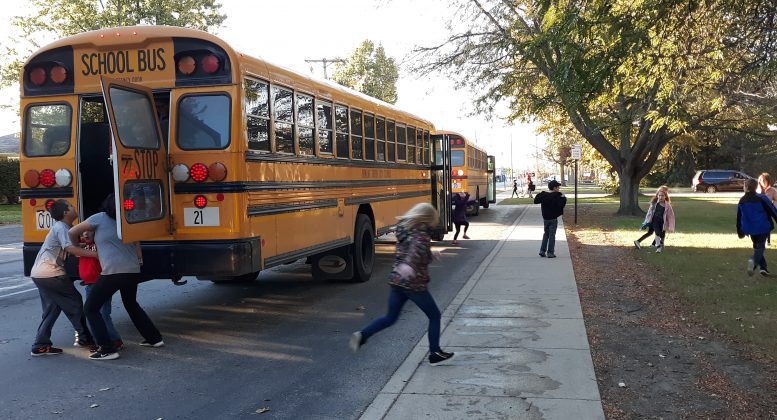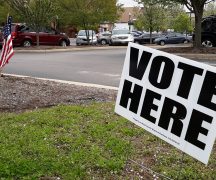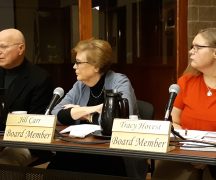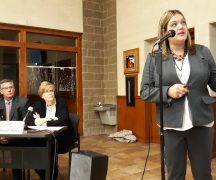By JAN LARSON McLAUGHLIN
BG Independent News
After two years of defending the quality of education at Bowling Green City Schools, the district has been exonerated. The district has shed the EdChoice label that led to a loss of some students and the school funds that followed those students to private schools.
The news that BG City School District was no longer on the EdChoice list told Superintendent Francis Scruci what he already knew.
“It basically says what we’ve known all along. We’ve got good things going on in our buildings,” Scruci said Thursday morning. “We’ve got some really good teachers working hard every day, and we’ve got kids trying to do their best.”
Scruci received word on Wednesday that Bowling Green City Schools no longer has any buildings on the EdChoice list. Kenwood Elementary had been on the list for two years and Crim Elementary was in limbo – possibly headed toward the list.
“That’s great news for Kenwood. That’s great news for the district,” he said. “It’s a weight off of everybody’s shoulders.”
Scruci had insisted from the start that Kenwood did not deserve to be labeled as EdChoice.
“Kenwood is not a failing school,” he said two years ago. “The staff is working very hard to provide a quality education.”
‘Flawed’ system
The EdChoice designation in 2019 came a couple months after school officials got the good news from the state that all the buildings in the Bowling Green School District had been removed from the Ohio Improvement Process, based on progress the district made in student growth. District-wide, Bowling Green was recognized for its improvements.
The “flawed” state testing system failed to take into account the progress made at Kenwood that got the building off the OIP list, Scruci said.
“It never made sense to me that Kenwood met the state goals,” but was placed on the EdChoice list.
Others labeled as EdChoice in Wood County were Lake high school and middle school, and Northwood elementary and high school. Those schools have also been taken off the list.
Schools united in protest
Bowling Green wasn’t alone in its claim of being mislabeled by the state.
Four years ago, there were 257 schools in Ohio designated as EdChoice. The next year, the number jumped to 517 schools. In 2020, the number exploded to 1,277 schools. The Ohio School Board Association predicted that 2,000 schools would be demoted to EdChoice by 2021.
“It was happening all over the state,” Scruci said.
As more and more school districts in Ohio were labeled “EdChoice,” the protest over the program magnified. Scruci and Executive Director of Teaching and Learning Angie Schaal testified in Columbus about the harm caused by the EdChoice program.
In addition to losing funding, the EdChoice label also gave districts a black eye – that many didn’t deserve, according to current School Board President Norm Geer, who noted Anthony Wayne was also on the list.
The EdChoice designations sink teacher and student morale
“These are not under-performing schools,” Geer said last year. “The point is Bowling Green has good schools, Anthony Wayne has good schools.”
Loss of students and funding
The EdChoice program requires public schools to pay for student vouchers to private schools, if the public school does not score high enough on statewide third grade reading tests.
After being bombarded last year by school officials asking for the EdChoice program to be re-evaluated, the legislature put a moratorium on the voucher program.
By January of 2020, public schools in Ohio had lost an estimated $107 million in state funding, and had seen an exodus of 22,638 students to private schools through the EdChoice voucher program.
The private schools taking in the students get “scholarships” of $4,650 a year for K-8 grades, and $6,000 a year for 9-12 grades.
So for each child leaving Kenwood Elementary, the school district loses $2,213 a year from the state, plus has to pay up to an additional $2,437 to the private school. That adds up to a potential total loss to the district of $4,650 per student a year.
The losses will linger. The state program allows parents of kindergartners to take them out of the public school and place them in private facilities all the way through graduation. The vouchers are only good if the students stay at the private school for consecutive years. Bowling Green officials estimated the district may lose close to $500,000 in state funding over the next four years.
The effect of the EdChoice designation on Kenwood Elementary in 2019 was the loss of 33 students who used state funding to enroll in private schools. Parents of 370 children opted to keep their children at Kenwood.
The Bowling Green Board of Education passed a resolution protesting the use of taxpayer money to pay for vouchers for students wanting to attend private schools.
“When the money leaves the district, it never comes back,” said then School Board President Ginny Stewart. “It’s an assault on public schools.”
Rationale questioned
The practice of paying vouchers for some students to leave an EdChoice school for a private school is troubling to many public schools labeled as EdChoice.
First, the scholarships aren’t given to the students who struggled with the state testing. Instead, the top students may choose to leave for private schools – making it even harder for the EdChoice school to reach the grades it needs to shed the designation.
Second, the publicly funded scholarships are paid to private and parochial schools – which don’t undergo the rigorous state testing required of public schools. So transferring to private schools may or may not benefit the students.
And third, for every student who leaves an EdChoice school, the district loses state funding. Some posed the question of who suffers in the long run when a district has less to spend on education.
The new ranking takes into consideration the poverty level of the district, Scruci said. Both Kenwood and Crim elementaries have poverty rates over 20% – despite the district’s “perceived wealth.”
“This levels the playing field,” he said.
Research shows that students from lower economic status often come to school less prepared. Bowling Green is judged on the same scale as Perrysburg – though 80 to 90 percent of Perrysburg kindergartners come into school with acceptable skill levels compared to 50 percent in Bowling Green. So Bowling Green students have much further to go to reach that third grade standard. Teachers spend a great deal of time helping students catch up.
The new list of EdChoice schools can be found at: http://education.ohio.gov/Topics/Other-Resources/Scholarships/EdChoice-Scholarship-Program/2021-2022-Designated-School-List





